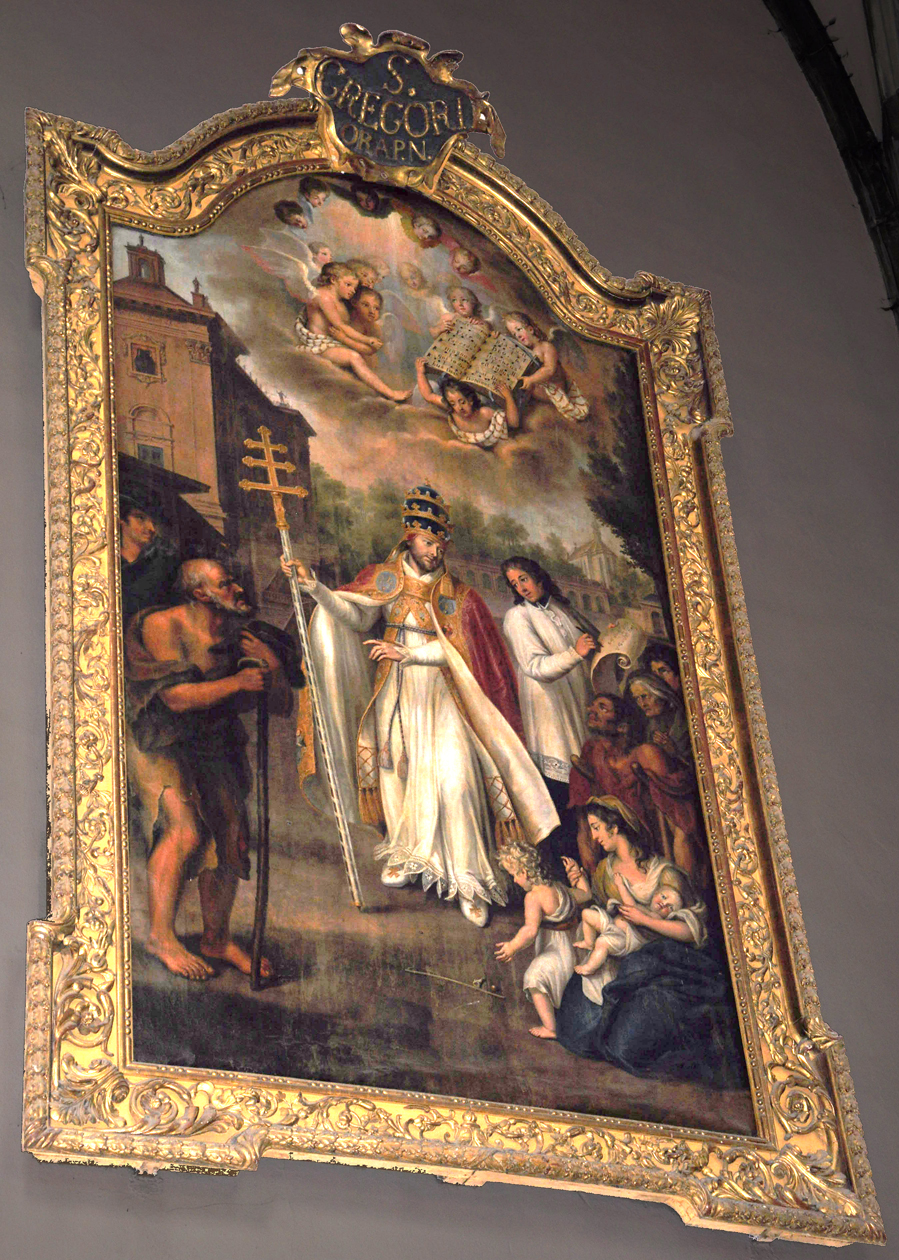
St. Gregory the Great
Church of St. Gregory, Ribeauvillé, France
The painting appears to be an attempt to celebrate a number of otherwise unrelated aspects of St. Gregory's story.
The angels in the sky above are singing an antiphon from the Common of Bishops, Ecce sacerdos magnus qui in diebus suis placuit Deo et inventus est iustus, "Behold a great priest who in his days pleased God and was found to be just."1
The secretary in white on the right appears to be taking dictation from the saint. This was Gregory's usual way of composing the many works for which he is famous. (I have not been able to make out what he is writing; perhaps it is the opening of one of Gregory's works.)2
The dusky people in rags to the left and right represent the poor to whose care Gregory was famously devoted.
That leaves the three figures in rags who are not dusky. When I first saw this painting I thought they must represent a miracle of St. Gregory of which I was unaware. But I have not been able to find any episode involving a woman and two infants in the Golden Legend, nor in either of the vitae printed in the Acta Sanctorum, nor in the lives from England.
If the three figures do not represent a miracle of the saint, one must ask whether the little ones are the "two fair children white and ruddy of visage and fair yellow hair which were for to sell" in Caxton's translation of the Golden Legend – that is, the English slaves whom Gregory saw in the marketplace and of whom he said, "they are not Angles but angels."
Caxton's word "children" translates pueri, which is what the slaves are called in all the Latin sources. A puer can be a male child of any age up to about seventeen.3 The South English Legendary (356) calls them "swete children." In all the sources Gregory's attention is drawn to them by their curly blond hair and fair complexion. A reader might expect slaves for sale in a market to be closer to the teen years than the tots in this painting, but the sources clearly allow such a visualization.4
View this image in full resolution.
Read more about images of St. Gregory the Great.
Photographed at the site by Richard Stracke, shared under Attribution-NonCommercial-ShareAlike license.